Last-Minute NYC Holiday Gift Guide 🎁
We’ve created a holiday gift guide with presents for the intrepid New Yorker that should arrive just in time—

See a long-lost carousel by Keith Haring, a Ferris wheel by Basquiat, and more fantastical works!

Luna Luna, the world’s first art amusement park was dreamt up in the 1980s by Viennese artist, musician, and peace activist André Heller. Heller was inspired by the magic of childhood amusement parks and the mission to make the avant-garde accessible and enjoyable to all. The park debuted in Hamburg, Germany in 1987, with monumental and fantastical works by art stars like Jean-Michel Basquiat, Kenny Scharf, Roy Lichtenstein, Salvador Dalí, David Hockney, and more. After decades lost in storage and an impressive conservation project, the fair is up and running once again, now open to visitors at The Shed in Hudson Yards.
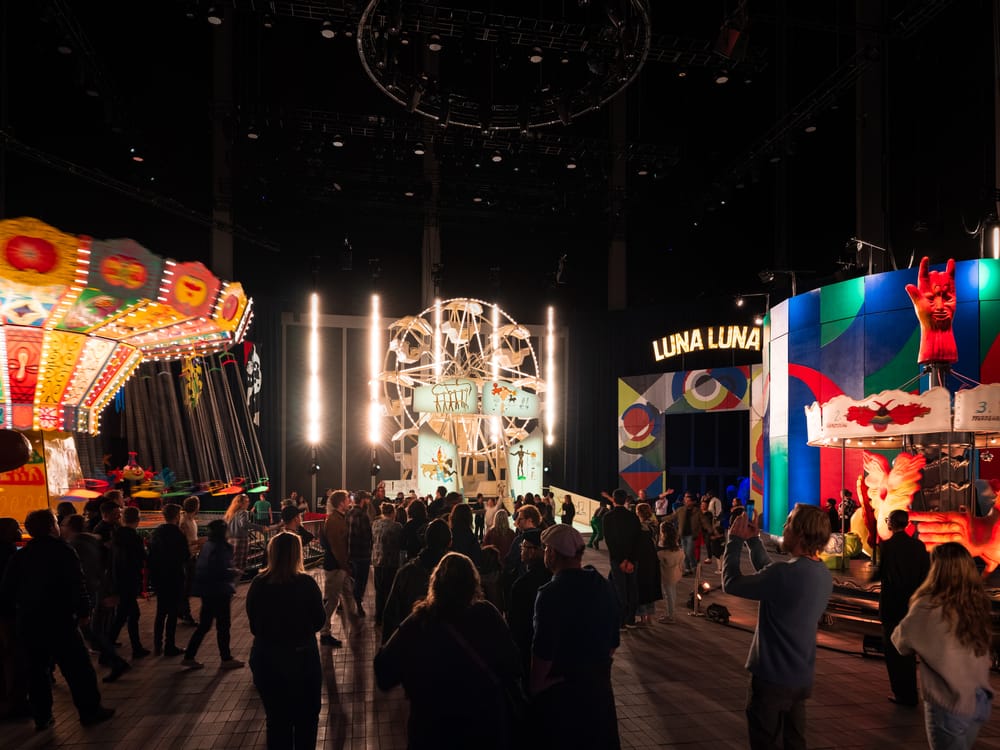
Heller’s conceptualization of Luna Luna was a romantic one. He had dreams of a world tour and hoped that each piece would touch viewers who typically don't come in contact with contemporary art. He described his relationship with Luna Luna as a love affair you cannot get out of your head. Unfortunately, while the fair's initial run in 1987 attracted over 300,000 visitors, the rest of the journey was not so easy.
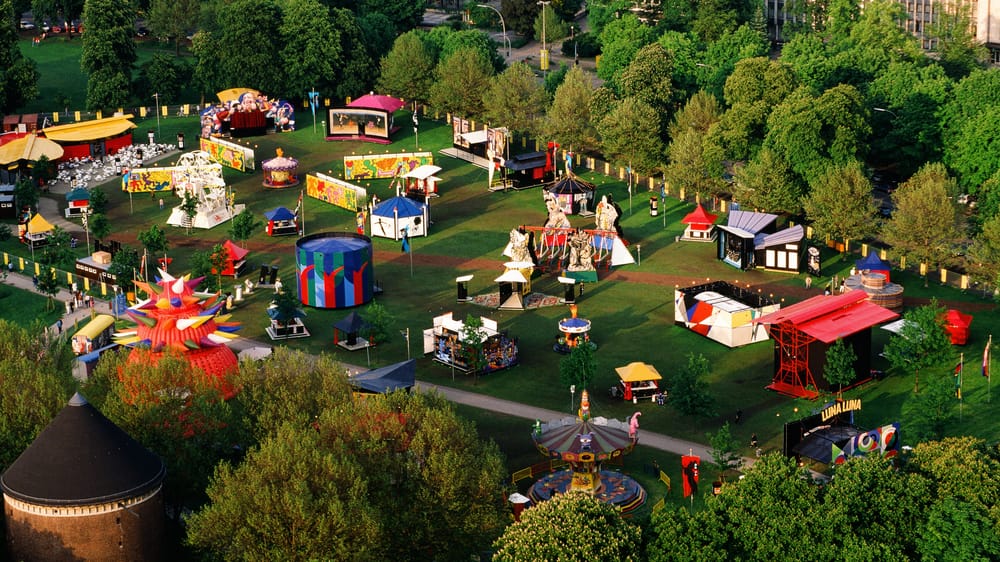
The political climate after the fair’s debut in Germany, combined with financial hardship and a series of logistical issues, dashed Heller’s dreams of a traveling art amusement park. The entirety of the fair was packed up into storage containers and abandoned in a warehouse in Texas for over 30 years.
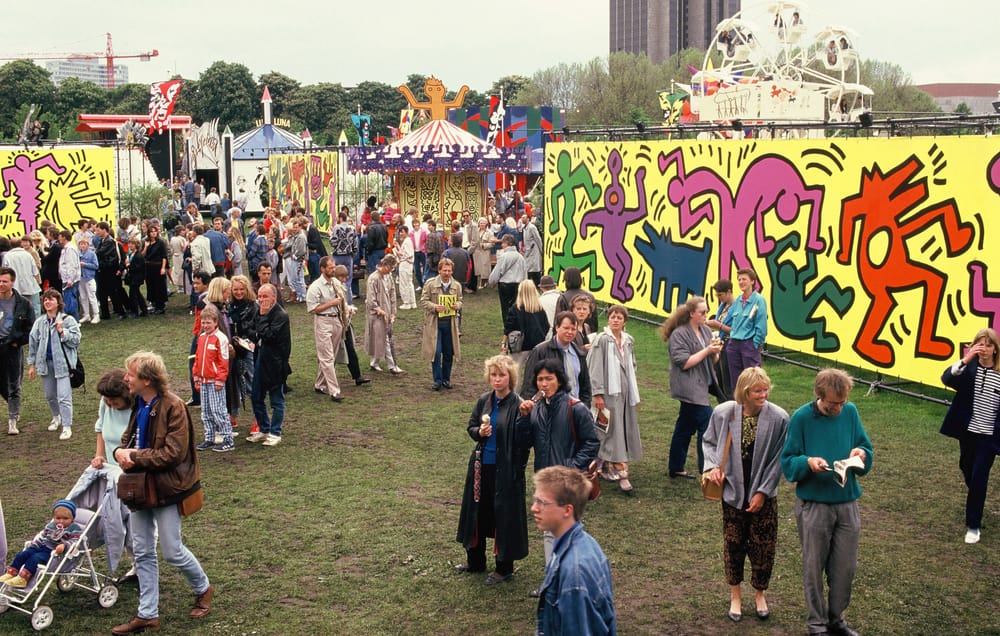
Decades after Luna Luna was packed away, entrepreneur Michael Goldberg, now Luna Luna’s creative director, hunted it down. In a combined effort to reinstate the exhibition to its former glory, the works were purchased sight unseen by renowned rapper Drake. Heller himself (now 77), along with curatorial advisors Kathy Noble and Helen Molesworth and a large conservation team, worked to bring the forgotten park back to its former technicolor glory.
“You can be art-obsessed or have never heard of Basquiat, and Luna Luna will put a smile on your face. It’s one of those rare projects that has the power to bring together all walks of life—it’s a nostalgic format done in a totally new way,” Goldberg shared regarding the significance of Luna Luna’s reinstallation.
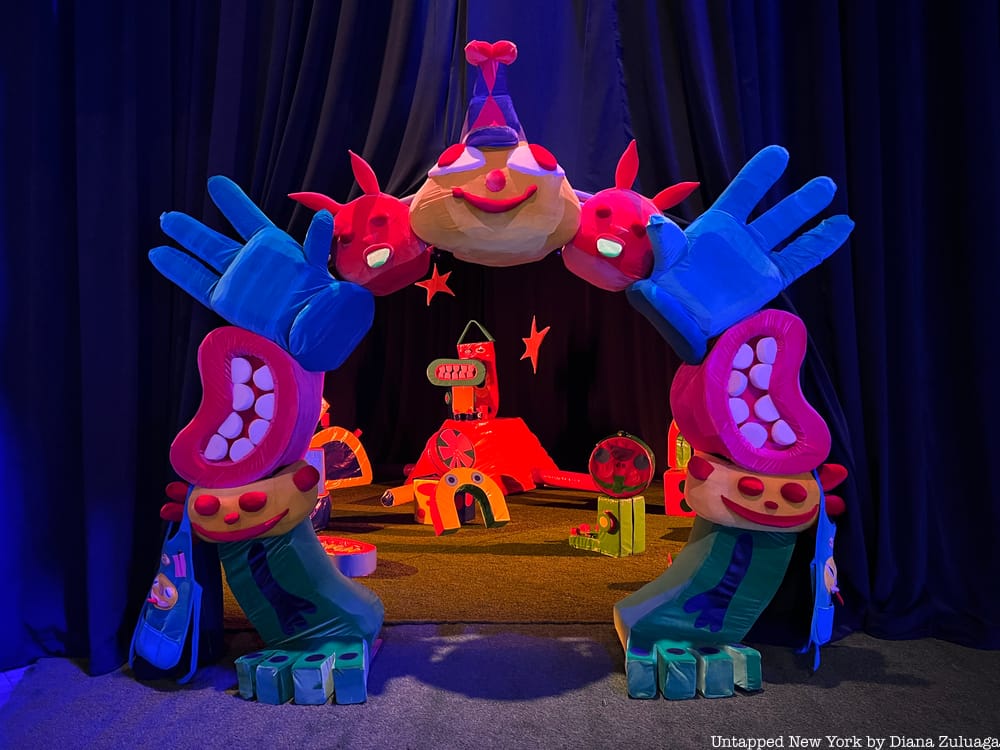
The exhibition includes a notable collection of works that hold their fair share of the fun and novelty required of a carnivalesque spectacle, as well as significant art history. Calling it a “Trojan horse of experimental art,” Kathy Noble, curatorial director, said in an interview with the New York Times, “The number of artistic movements it covers is kind of crazy…Everything from abstraction, art brut, Dada, Fluxus, Neo-Expressionism, nouveau realism, pop art, surrealism, Viennese Actionism—most exhibitions will not cover this breadth.”
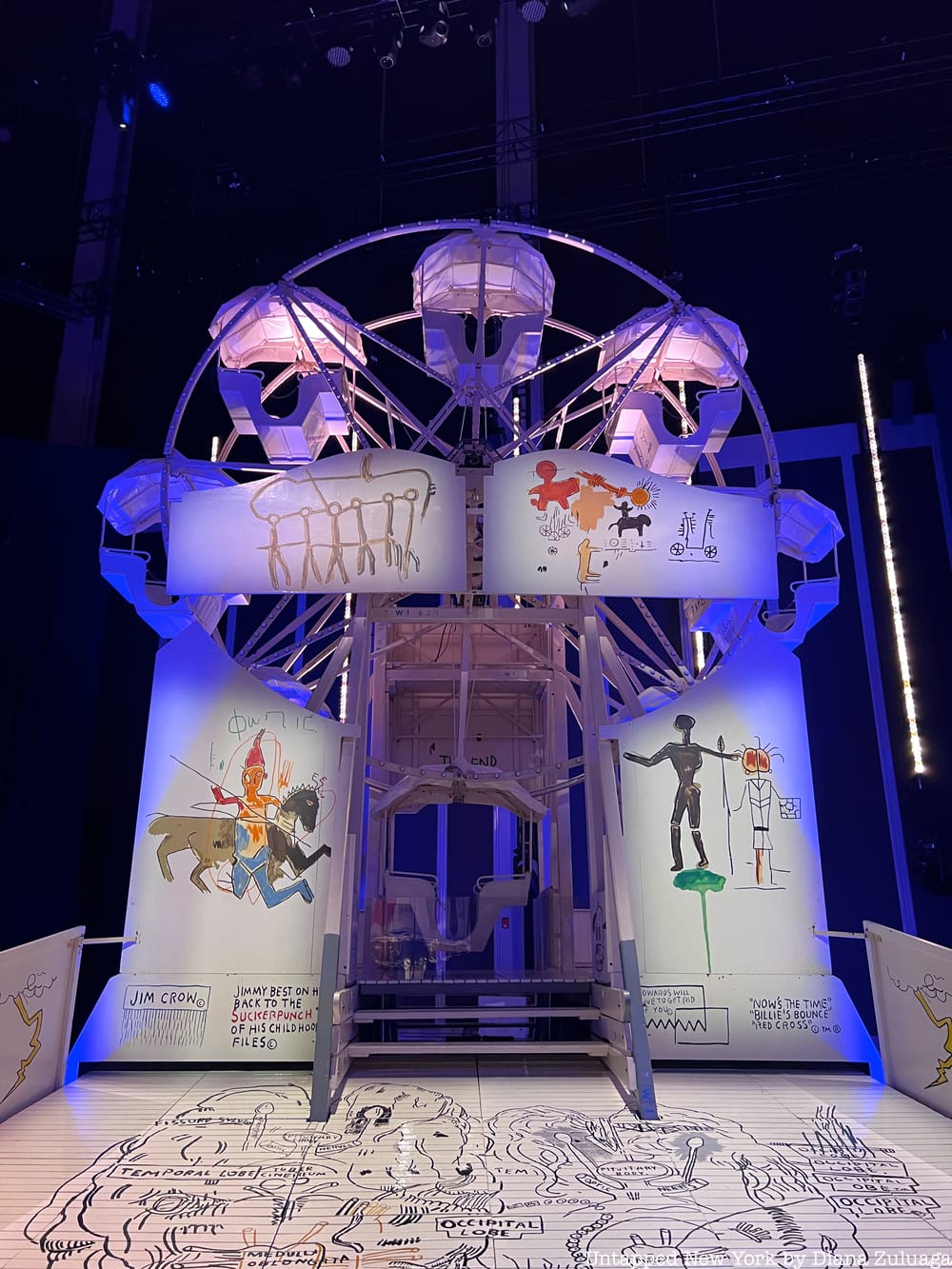
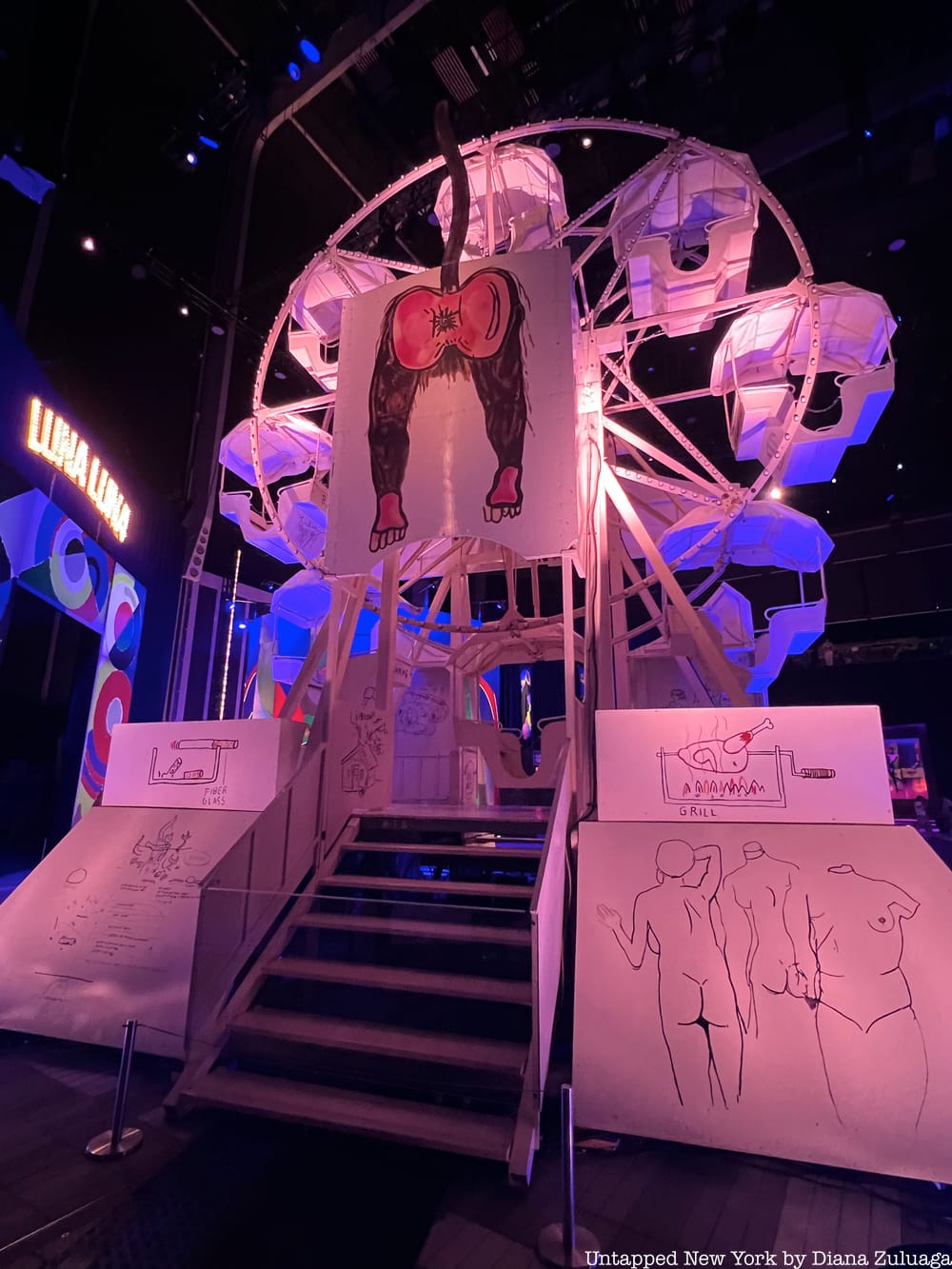
The front and back of Jean-Michel Basquiat’s painted Ferris wheel, Photos by @dmz75
Highlights of the exhibit include Jean-Michel Basquiat’s painted Ferris wheel, created specifically to accompany Miles Davis’s “Tutu,” which played with the ride when it was still running; Keith Haring’s painted carousel, which features his iconic characters as well as the debut of new ones; and André Heller’s Wedding Chapel, an installation-performance piece where visitors can “marry” whomever or whatever they want.
Many of these works were meant to be tongue-in-cheek, both romantic and political. Heller curated a colorful and balanced composition of work equally kitschy, loud, and raucous. For example, when Heller’s Wedding Chapel debuted, it allowed for a visitor to “marry” a bike or a fish if they wished but also allowed guests to “marry” other guests at a time when marriage was a privilege only allowed to heterosexual couples.
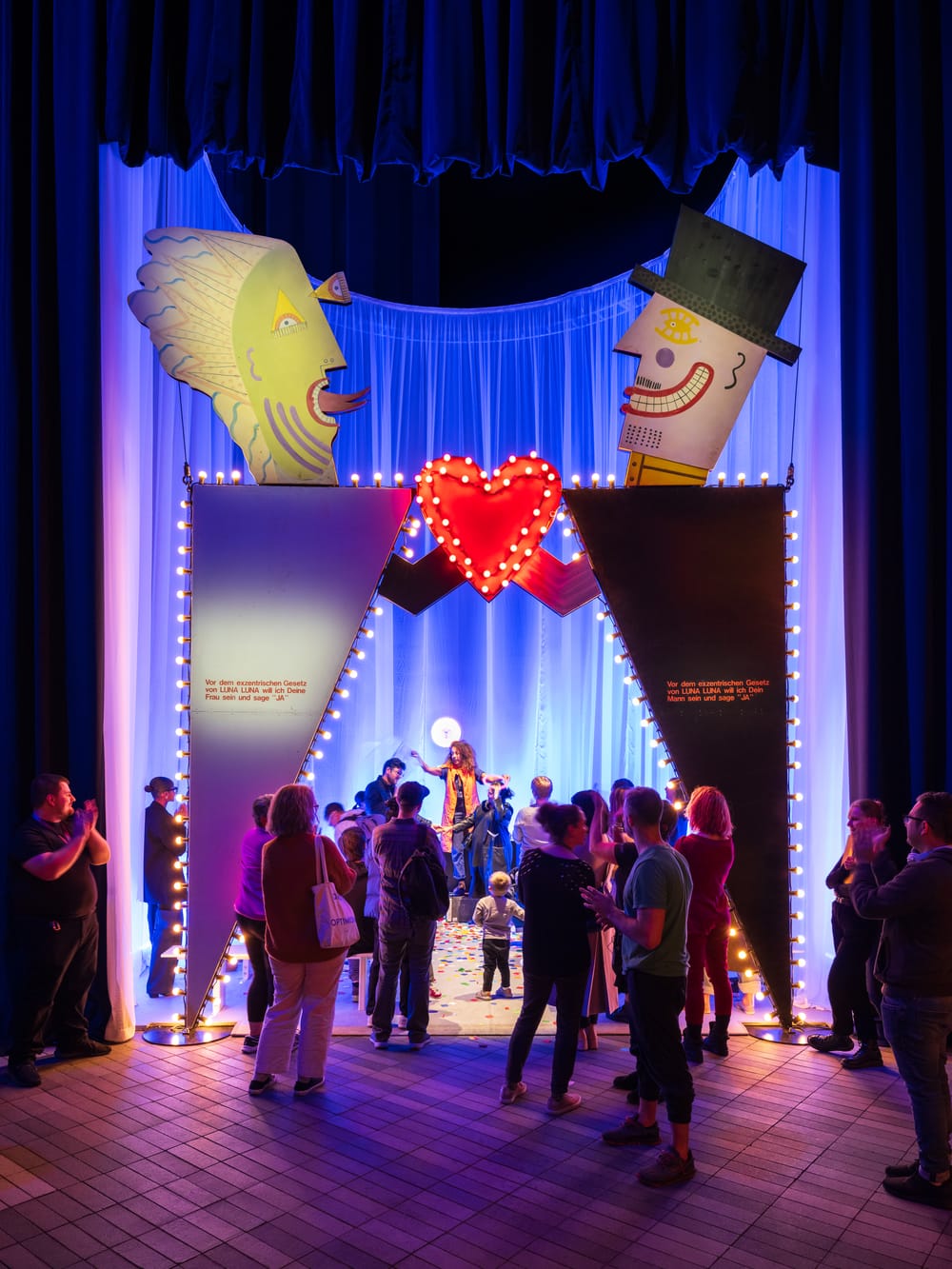
Haring’s personal journals highlighted how he didn't conceive the new characters found on his carousel but instead, they were the result of creative liberties that some designers took. While Haring painted the carousel himself, he noticed some members of the installation team had added lines in his figures’ bellies because they had seen him do so in his book. His journal entry from March 1, 1987 reads: “So what?”
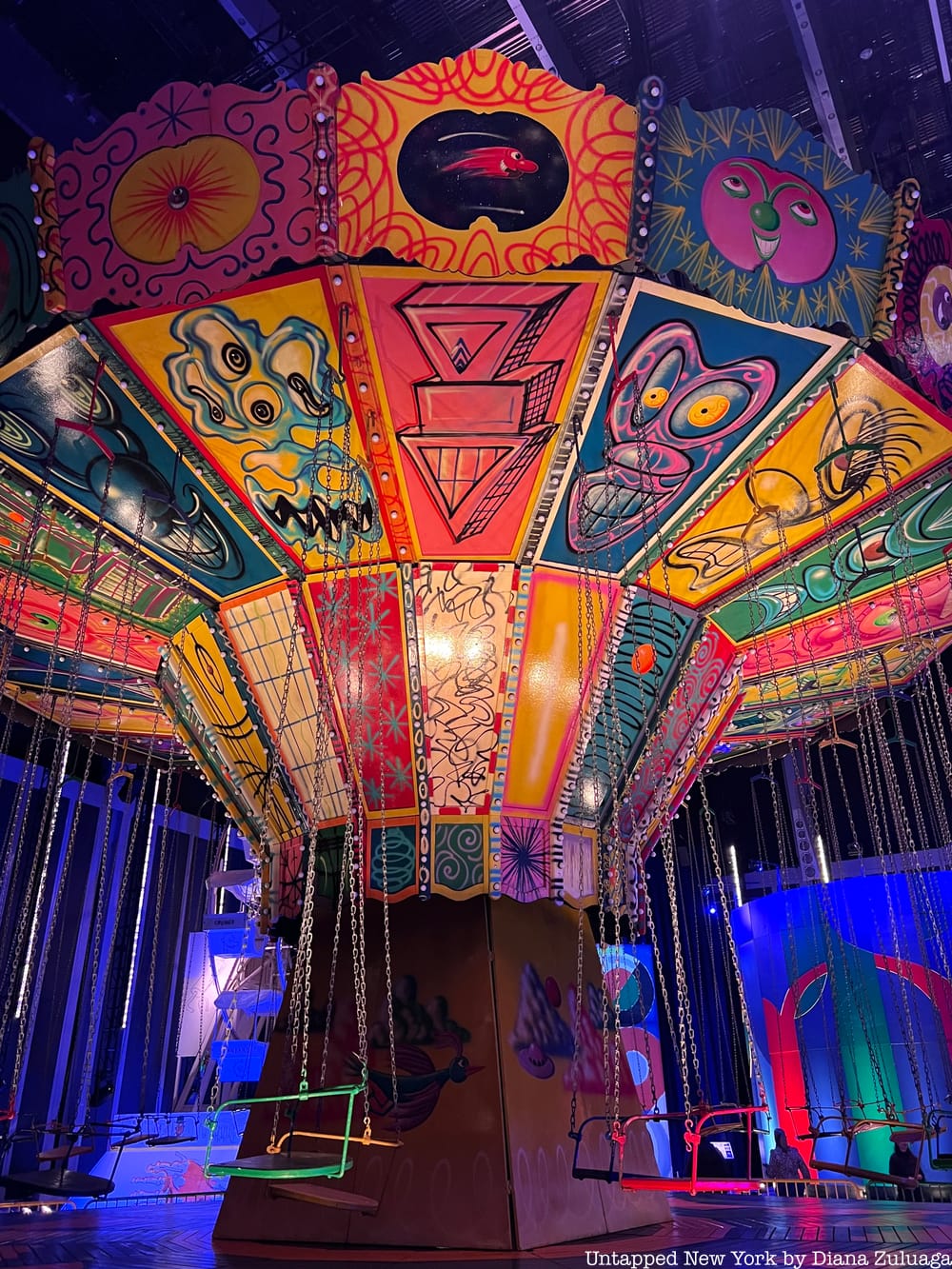
Kenny Scharf, chair swing ride, Photo by @dmz75
Visitors to New York’s Luna Luna exhibit are not allowed to ride Haring’s carousel or Scharf’s swing ride, but both attractions run riderless in the exhibition space. While some rides are no longer functional, there are plenty of experiences that viewers can participate in. Roy Lichtenstein’s Luna Luna Pavilion, a glass labyrinth, is open for visitors to navigate. (Lines stretched around the pavilion itself as people waited gleefully for a chance to enter, arms outstretched, bumping into glass panels and giggling.) Salvador Dalí’s Dalídom, a “geodesic dome with a mirrored interior meant to induce spatial hallucinations,” expands on the artist’s surrealist work and also allows for the quintessential Instagrammable mirror selfie.
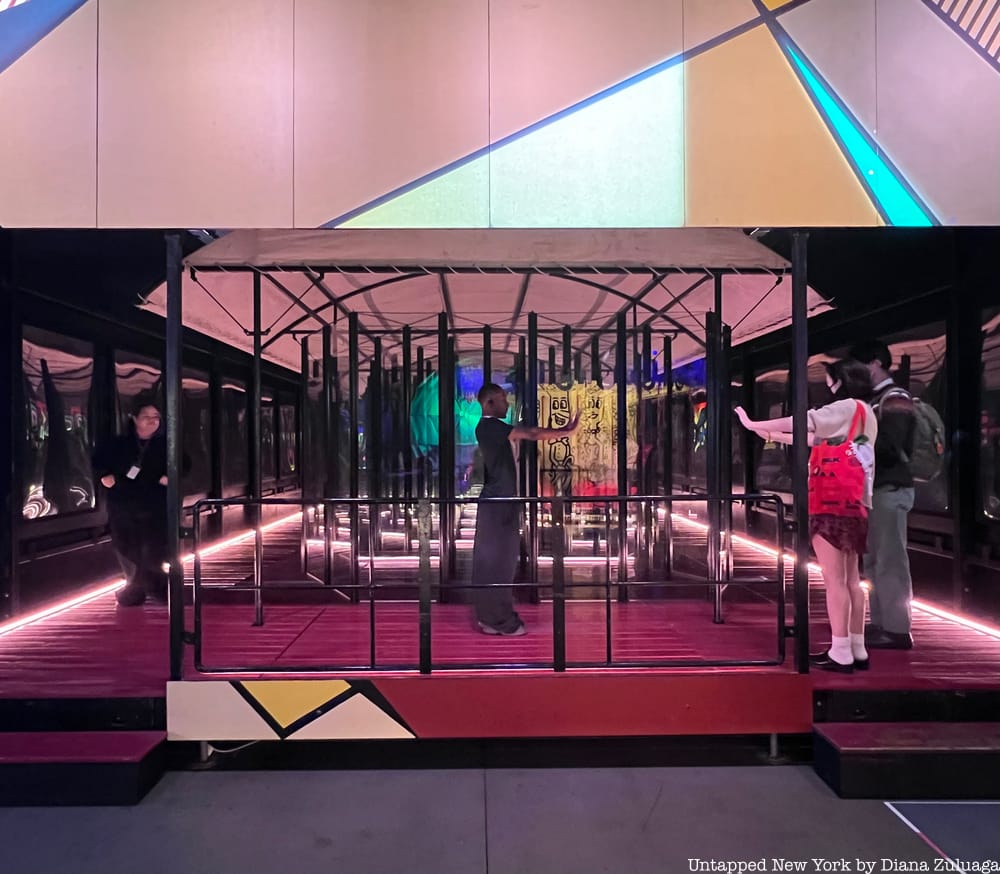
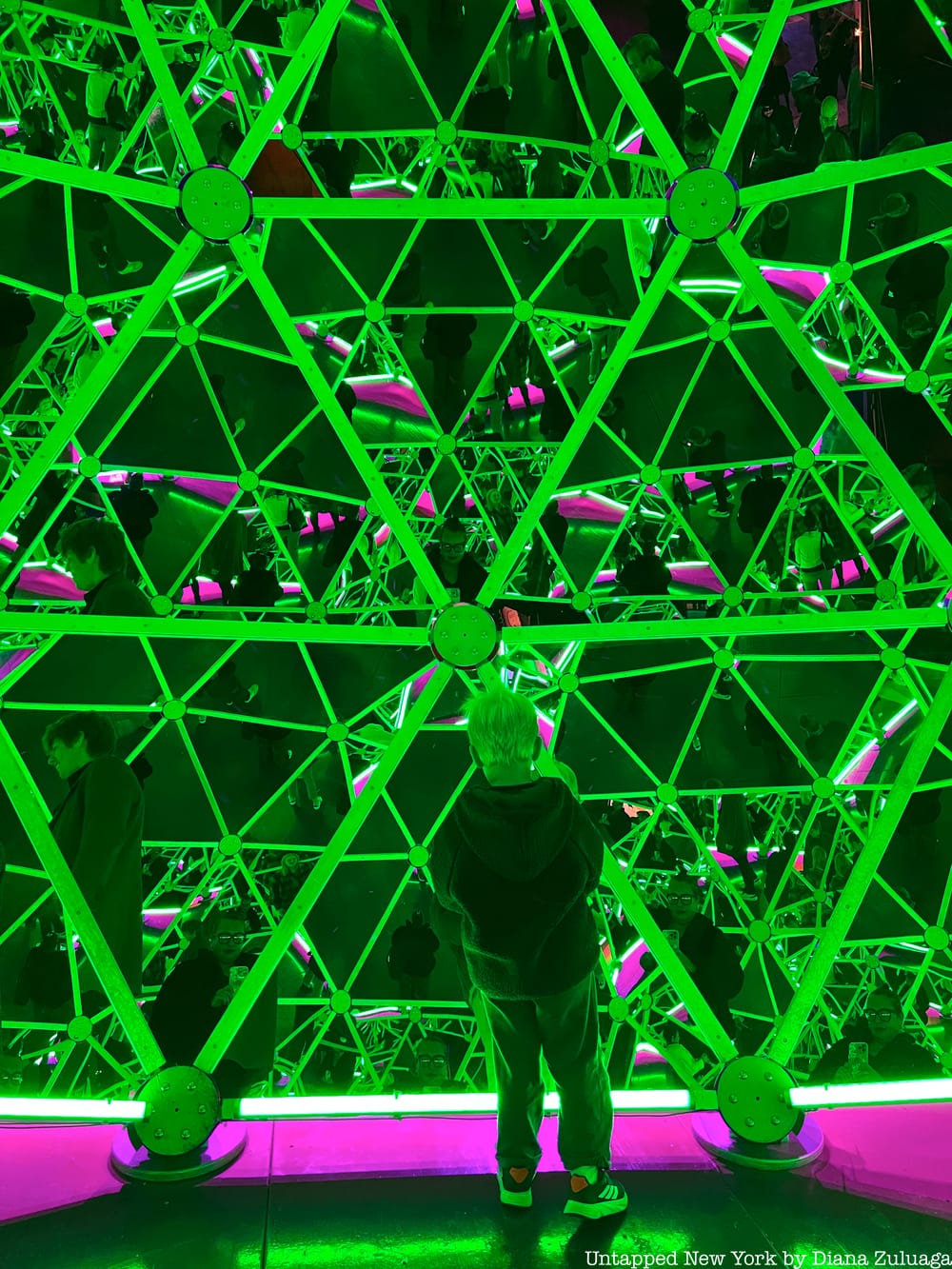
(Left) Roy Lichtenstein's, Luna Luna Pavilion - (Right) Salvador Dalí, Dalídom, Photos by @dmz75
Another notable work in the exhibition is Rebecca Horn’s Love Thermometer, a life-size thermometer meant to emulate a sort of mood ring for the passing participant (singles, couples, groups alike). The work marks a range of emotions in German, such as “solitude,” “tenderness,” and “longing,” with a red alcoholic liquid inside the thermometer that rises and lowers in response to heat. The work is an exhibition copy–an exact replica of the original–as Horn’s Love Thermometer was unfortunately too damaged to display. Luna Luna worked with a glassblower, sign painter, and scientist to remake the panel.
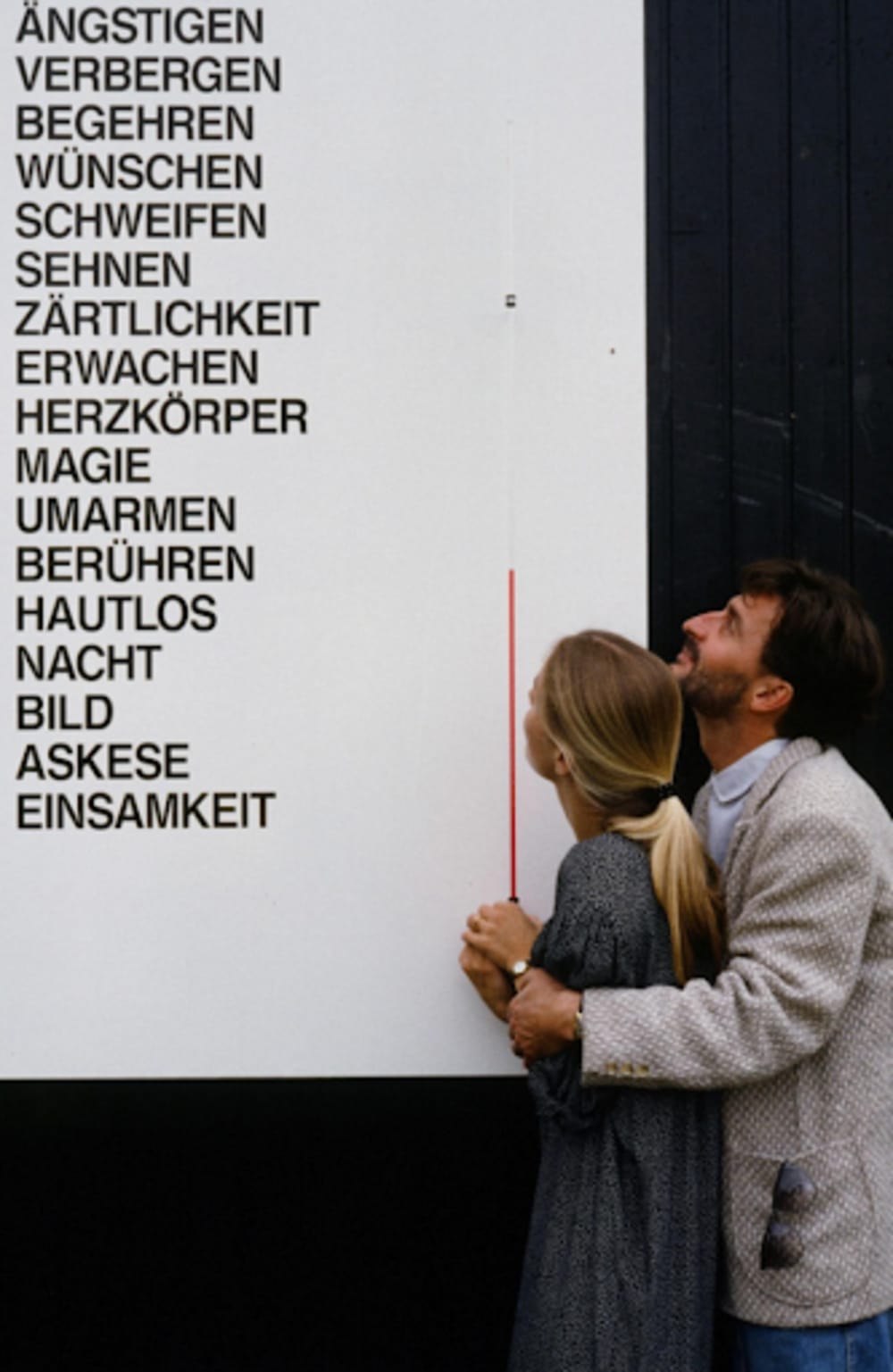
The works in Luna Luna combine absurdity with sweetness. It seems almost magical that even when recontextualized into an indoor cultural center in New York that hosts events like commercial art fairs, the exhibition still manages to retain a sense of warmth and charm from all those years ago. The bright side of a monumental exhibition like this being locked away for decades is that Luna Luna can now serve as a fossil, a reminder of the impact these artists had on contemporary art, political change, and the communities around them.
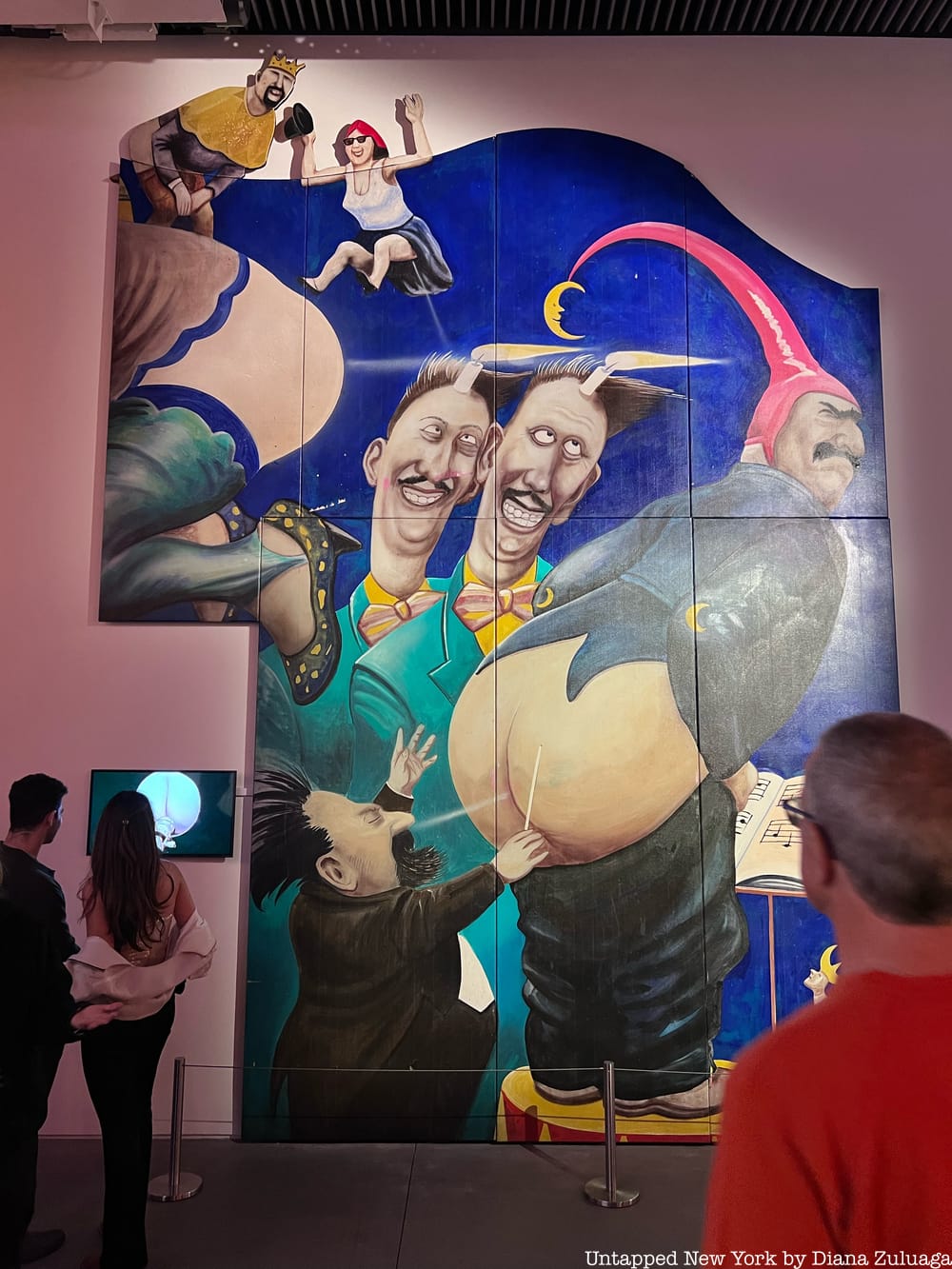
In addition to the rides, the exhibition also features extensive wall text, smaller drawings, artist notes, and photo collections from Sabina Sarnitz’s archive. Sarnitz began as a photographer documenting the early days of Luna Luna and eventually became André Heller's wife. As visitors take in the attractions, costumed performers roam the "fairground," further enhancing the playful, carnivalesque atmosphere.
The fortuitous combination of generous restitution efforts, good timing, and Heller’s dedication to the arts allowed for the resurgence of Luna Luna, which had its 21st-century debut in Los Angeles late last year. That success led us here, to the Shed in New York. During its New York exhibition, Luna Luna will host further programming with yet-to-be-announced special events, holding true to its roots in education and access.
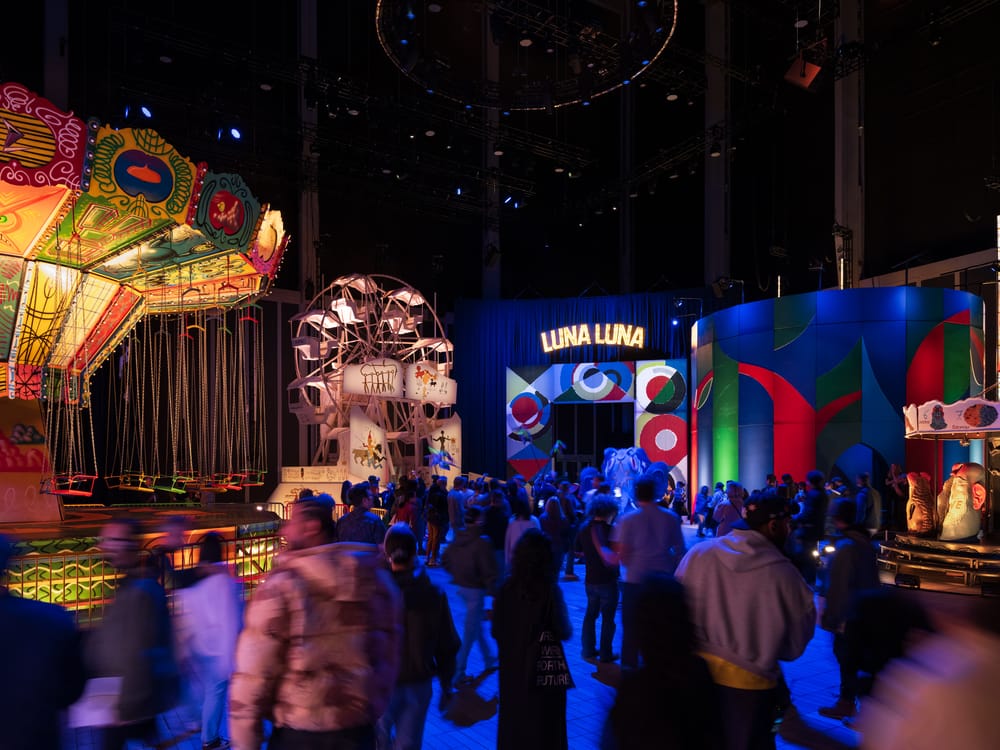
Luna Luna opens to the public on November 20, 2024, and will run until January 5, 2025. Tickets can be purchased on The Shed’s website here. The exhibition is accompanied by a gift shop stocked with archival finds—merchandise and prints from the original Luna Luna—along with MoMA exclusives, which can be found on the MoMA Design Store’s site.
Luna Luna is an ode to extravaganza, spectacle, and fun, that we guarantee you won’t want to miss. As Haring himself said: “Art is nothing if you do not reach every segment of the people.”
Subscribe to our newsletter